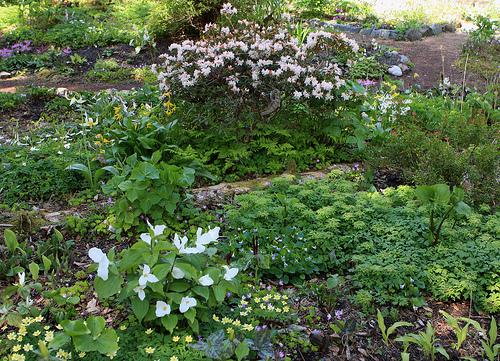Why create a woodland garden? If planned correctly, woodland gardens can be attractive, lower maintenance additions to the landscape. They can include existing woodlands enhanced with selective thinning or new understory plantings designed from scratch.
Woodland gardens can provide valuable wildlife habitat, create cool areas in summer, and reduce maintenance and lawn needs.
A woodland garden can be a type of naturalized area or a more formal parkland area that includes trees and ground cover. Many city parks could be considered a modified form of woodland garden. Interesting light patterns can be created by how trees are arranged on the site.
Shade will be the primary consideration when thinking about designing the woodland garden. Woodland gardens generally do not produce the intense shade that heavily forested areas do.
Observing native plant communities and mimicking their qualities provides ideas for the woodland garden. Use trees, shrubs, and ground covers that are adapted to the local climate and soil type.
Many native and adapted plants are available at local nurseries.

Designing the Woodland Garden
In their simplest form, woodland gardens consist of an overhead plane formed by the tree canopy and a ground plane consisting of turf or other ground cover.
To add complexity and enhance diversity of the woodland plant structure, shrubs and other forbs (perennials) may be added. Mix a variety of evergreen and deciduous trees and shrubs to create habitat for wildlife. Also, consider the shade requirements for the understory plants.

Design Considerations:
- What visual and spatial qualities are desired?
- What uses will the woodland garden have?
- Will it be strictly visual?
- Will there be access through the garden space(s)?
- Will garden ‘rooms’ or openings be created?
- Will there by paths for strolling?
Structure Considerations:
- How many layers (trees, shrubs, perennials, and groundcovers) will be included? More layers with different types of vegetation creates higher plant diversity and better wildlife habitat
- How much shade will there be?
- Will you be creating a new woodland from scratch or designing within existing woodland areas?
Additional Resources:
Midwest
Missouri: Gardening in the Shade
